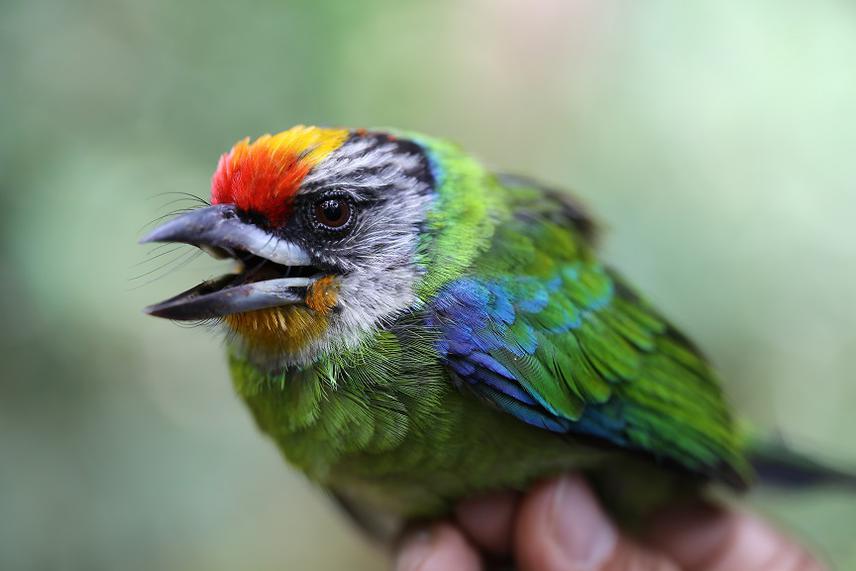Malcolm Soh Chu Keong
I will study the impacts of habitat and climate change on montane anuran and avian communities in Peninsular Malaysia comparing data that I surveyed 12 years earlier. I am also investigating the phylogenetic relationships and differential resilience of sub-populations of montane species across different geographic scales.

Golden-throated Barbet - a montane bird in Peninsular Malaysia.
Tropical montane forests (>1000m a.s.l.) in Southeast Asia (SEA) comprise more than half of such remaining forests globally. They serve as important refuges for many endemic species and are crucial sources of pristine water. However, they are increasingly endangered due to anthropogenic development and climate change. Southeast Asia is experiencing a 1.0% yearly decrease in montane forest cover with the average temperature predicted to rise up to 3.2⁰C by 2100. Empirical studies in SEA have revealed that upward shifts in the altitudinal distribution of birds and moths can be attributed to deforestation and/or climate change. My earlier study showed that montane birds in Peninsular Malaysia are particularly sensitive to forest canopy removal, with less than a third of resident species remaining if more than 40% of canopy cover was lost. However, there have been no studies documenting the combined effects of habitat and climate change on montane amphibians and birds in SEA.
The effects of habitat and climate change can be assessed by sampling different localities along a disturbance gradient. However, the spatial distribution of populations may not be uniform. Thus, it is crucial to investigate their response to temporal changes in the same localities. Comparing data 12 years earlier, I will analyse how bird species abundances have been affected by habitat and climate change. Then, using models I will project abundances and species' resilience to habitat quality and climate change. I will also survey an additional two study sites, a reserve and degraded site, and frogs to determine if their responses are similar to birds. Frogs are ideal study taxa since they are highly sensitive to environmental changes and are representative fauna of aquatic and terrestrial environments. Since individuals are captured to study their demography, I will also examine their phylogeny from blood and tissue samples. Such knowledge not only deepens our understanding of the biogeography and phylogeny of montane biota but also strengthens the cause for their preservation since gene flow between populations even within the same mountain range are expected to be low.